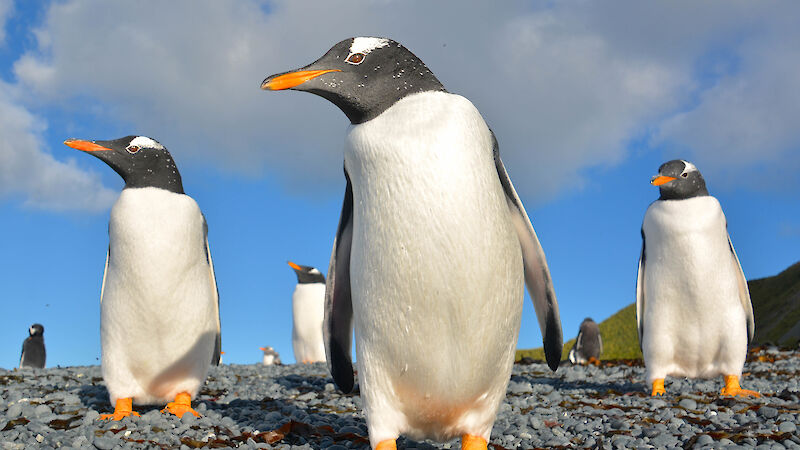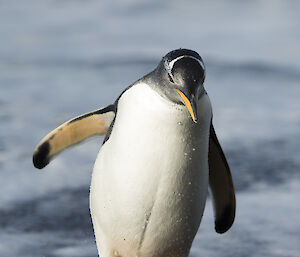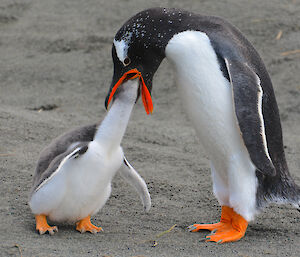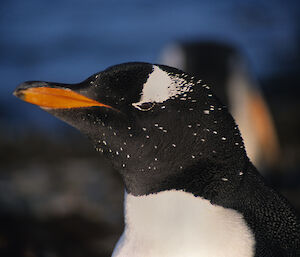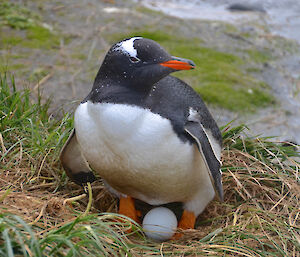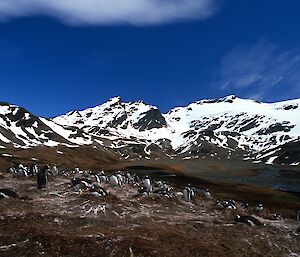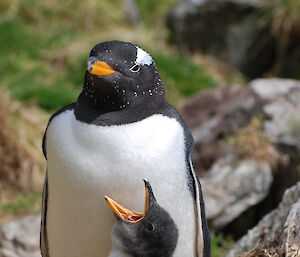Scientific name: Pygoscelis papua
Physical description
Gentoo penguins have a bright red-orange bill and conspicuous white eye patches.
Gentoo penguins are the third largest penguin species alive. Adults weigh 5–8kg. Males tend to be larger than females, but the difference can be difficult to see.
Gentoo penguins are closely related to Chinstrap and Adélie penguins.
Distribution and abundance
Gentoo penguins have a large geographic range. They breed on many sub-Antarctic islands and on the Antarctic Peninsula. They generally occupy their islands all year round.
The largest populations of gentoo penguins are in the Falkland Islands (South Georgia), and on the Antarctic Peninsula.
Of the penguins found on the sub-Antarctic islands, Gentoo penguins are the least abundant. The total breeding population is approximately 387,000 pairs.
Populations may be increasing around the Antarctic Peninsula. However, they may be decreasing in the southern Indian Ocean. Overall, the global population of gentoo penguins is considered stable.
In the past, humans collected the eggs of gentoo penguins, particularly in the Falkland Islands. At the Falklands, the penguins share their colony grounds with grazing animals, such as sheep and cattle, that can trample nests.
Conservation status: least concern
Breeding
Gentoo penguins start breeding when they are 2–4 years old. Their breeding cycle is more variable than other penguins.
Gentoos build nests on beaches or among tussocks, and keenly defend their turf. The location of their breeding colony is slightly different each year.
Female gentoo penguins lay two eggs, which are incubated for 34–37 days.
Chicks start to form crèches when they are about 26 days old. They fledge at 80–90 days old.
Diet and feeding
Gentoo penguins are opportunistic hunters. Their diet is quite diverse and varies with season and location. They usually eat a mix of crustaceans, small fishes and squid.
Predators of gentoo penguins include other birds and sea animals. Skuas eat the eggs of gentoo penguins. Sheathbills, caracaras (falcons), kelp gulls, giant-petrels and feral cats pray on young birds. Leopard seals prey on older birds. Nests are often flattened by indifferent southern elephant seals as they move about the island.



